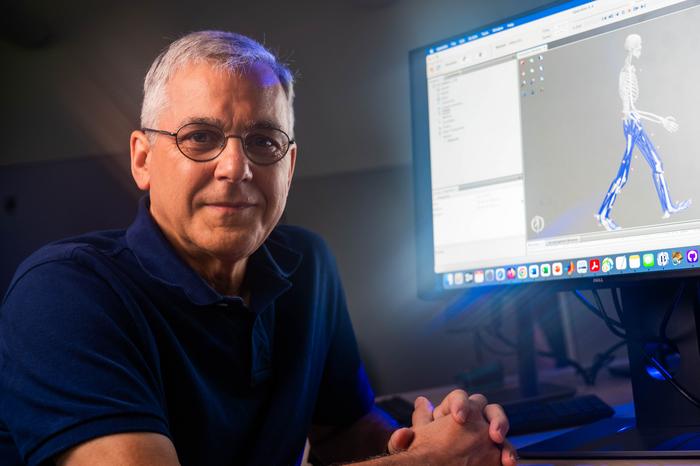Researchers at Rice University have unveiled a groundbreaking software solution named the Neuromusculoskeletal Modeling (NMSM) Pipeline that addresses critical challenges in treating movement impairments brought on by a variety of conditions, including stroke, osteoarthritis, and spinal cord injuries. Led by Benjamin J. Fregly, Trustee Professor of Mechanical Engineering and Bioengineering, the team aims to bridge the gap between personalized medicine and traditional treatment design through advanced computational modeling techniques. This innovative software allows healthcare professionals to tailor treatments based on the unique anatomical and physiological characteristics of individual patients, thus enhancing the effectiveness of orthopedic surgery, physical therapy, and neurorehabilitation interventions.
The NMSM Pipeline operates on the premise that the human neuromusculoskeletal system can be modeled similarly to complex mechanical systems, utilizing principles of physics joined with insights from physiology and neuroscience. The software emerges at a pivotal moment when nearly 1.7 billion people worldwide grapple with movement impairments that significantly curtail their quality of life. This widespread issue affects about 19% of the adult population in the United States alone, marking the necessity for more effective and personalized treatment strategies. Fregly’s research team seeks to address this pressing societal challenge by leveraging state-of-the-art simulation technologies to create accurately personalized digital twins of patients, hence transforming the conventional treatment landscape.
The foundation of the NMSM Pipeline is built upon an existing open-source musculoskeletal modeling software known as OpenSim, developed by Stanford University researchers. However, Fregly’s team has not merely improved upon this existing framework; they have introduced two novel toolsets that significantly enhance its capabilities. The model personalization toolset enables the creation of individualized digital models that encapsulate the unique anatomical and physiological traits of each patient, while the treatment optimization toolset empowers clinicians to simulate various treatment options and predict potential outcomes based on the personalized models.
Moreover, the NMSM Pipeline distinguishes itself from existing methodologies by utilizing physics-based models that require significantly less data to derive predictions, enabling researchers and clinicians to extrapolate accurately into novel treatment scenarios. This capability enhances the reliability and applicability of the treatment designs produced through the NMSM Pipeline, markedly improving the potential for patient recovery. The clinical utility becomes even more compelling as the software provides ease of use, allowing for the construction of a personalized neuromusculoskeletal model in as little as one day, further streamlining the treatment design process.
The predictive capabilities of the NMSM Pipeline have already demonstrated profound implications in clinical practice. For instance, Fregly’s lab previously devised a rehabilitation treatment for medial knee osteoarthritis that proved to be as effective as invasive orthopedic surgical solutions. By employing the NMSM Pipeline, the team was able to bring this promising treatment back to prominence through sophisticated simulations, emphasizing the software’s role in uncovering previously overlooked therapeutic options hiding “in plain sight.”
While the model personalization and treatment optimization processes can initially require significant time investment, the ongoing development of best practices can significantly shorten the treatment design timeline for various clinical problems. This evolution could enable entire computational treatment design processes to be executed efficiently within days, making the concept of a personalized digital twin not just theoretical but increasingly practical in real-world settings. Furthermore, the software’s intuitive interface means that users need minimal engineering expertise, broadening access for researchers and clinicians alike.
Fregly expresses optimism about the transformative potential of the NMSM Pipeline within the realm of neuromusculoskeletal modeling. By rendering these sophisticated capabilities readily accessible, the research team hopes to shift the focus from subjective evaluations based on clinical experience to objective predictions grounded in personalized modeling. This shift has the potential to enhance quality of care and improve overall outcomes for patients suffering from movement impairments.
The underlying research and development of the NMSM Pipeline received funding from notable organizations, including the National Institutes of Health, the Cancer Prevention and Research Institute of Texas, and the National Science Foundation. Although the presented content reflects the authors’ viewpoints and findings, it does not necessarily represent the official opinions of the funding institutions. Overall, the introduction of the NMSM Pipeline marks a significant milestone in the integration of advanced computational tools in clinical settings, symbolizing a promising future for personalized medicine in the treatment of movement impairments.
By aligning cutting-edge engineering principles with real-world clinical challenges, the NMSM Pipeline embodies a forward-thinking approach that could reshape both rehabilitation practices and the broader landscape of orthopedic care. As medical professionals adopt these advanced tools into their workflows, the prospect of improved patient experiences and enhanced functional recovery outcomes appears more promising than ever, transcending traditional methodologies and paving the way for a new paradigm in patient care.
Given the extensive research, technological advancements, and the commitment from Rice University’s team, the NMSM Pipeline not only addresses immediate clinical needs but also sets a foundation for future innovations in healthcare solutions. The potential ripple effect of such developments shines a bright light on the future of movement therapy interventions and personalized medical treatments.
In conclusion, the NMSM Pipeline represents a leap forward in the engineering and medical fields by creating a synergy that empowers clinicians to deliver more effective, personalized care. This initiative illustrates the critical importance of interdisciplinary collaboration in tackling complex health challenges, ultimately striving to enhance the lives of millions affected by movement impairments worldwide.
Subject of Research: Neuromusculoskeletal Modeling Pipeline
Article Title: The Neuromusculoskeletal Modeling Pipeline: MATLAB-based model personalization and treatment optimization functionality for OpenSim
News Publication Date: 19-May-2025
Web References: http://dx.doi.org/10.1186/s12984-025-01629-5
References:
Image Credits: Rice University
Keywords
Bioengineering, Computational Modeling, Personalized Medicine, Orthopedic Treatment, Rehabilitation Technology, Movement Impairments, Neuromusculoskeletal System, Digital Twins, Open Source Software, Advanced Simulation Techniques, Clinical Optimization, Medical Research.
Tags: addressing global movement impairmentsadvanced simulation technologies in healthcarecomputational modeling in neurorehabilitationenhancing treatment effectiveness for osteoarthritisinnovative approaches to patient-specific healthcaremechanical and physiological modeling in medicineNeuromusculoskeletal modelingpersonalized medicine in physical therapyRice University research on orthopedic surgerysoftware for movement impairment solutionsstroke and spinal cord injury treatmentstailored treatments for movement disorders





